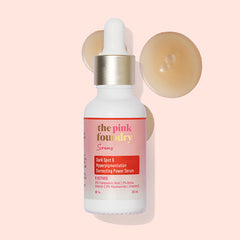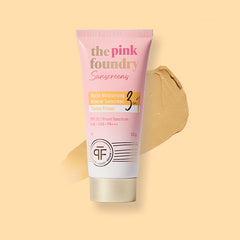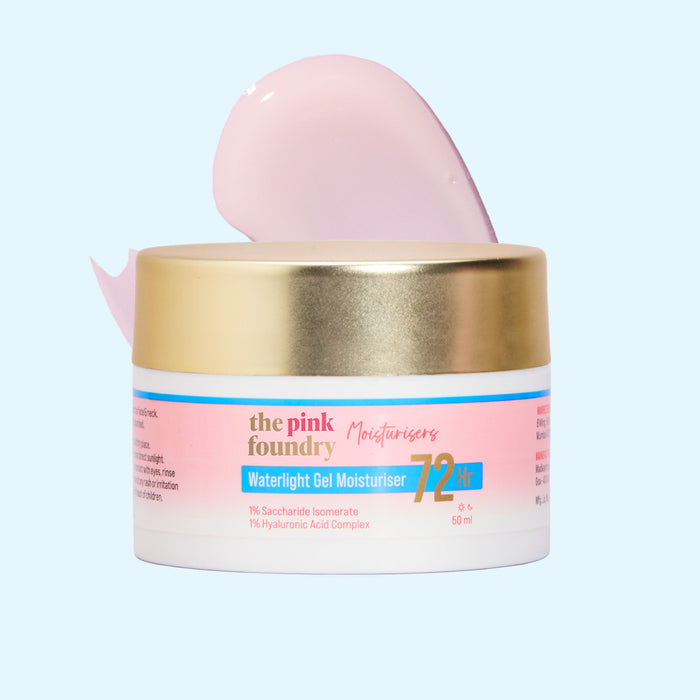Expert tips and solutions for an oily face T-zone
For many people, the T-zone on the face tends to produce more oil than other areas. This overproduction of sebum leads to a shiny complexion and clogged pores. While genetics plays a role, lifestyle factors can also trigger excess oiliness. The good news is that the proper skincare routine and treatments can control shine and prevent breakouts in the T-zone. This article covers the causes of an oily T zone on the face and tips for controlling it.
What is the face T-Zone?
The T-zone refers to the forehead, nose and chin areas typically containing a high concentration of oil glands. This region appears shinier and is prone to blackheads and acne breakouts. The combination of oil and dead skin cells can clog pores here, leading to various blemishes if not adequately managed.
How to identify the T-Zone on your face?
It's easy to locate your face T zone. Simply use your fingers or a tissue to blot the forehead, nose, and chin lightly. If you notice oil or shine more in these areas than other parts of your face, you likely have an oily T-zone. This is especially apparent as sebum production increases at the end of the day. An oily T-zone may also look slightly more textured with visible pores.
Identifying the causes of an oily T-Zone
To understand how to manage an oily T-zone you must know what causes an oily t zone. There are several possible triggers for an oily T-zone, both internal and external:
- Hormonal Fluctuations: Changes in androgen hormones before periods or during puberty can stimulate sebaceous glands.
- Genetics: Some people are just prone to producing excess sebum.
- Stress: Stress hormones trigger more oil production.
- Heat and Humidity: Environments with warm temperatures and moisture deplete skin water reserves, signalling the need for more oil.
- Medications: Certain drugs like corticosteroids can induce oily skin.
- Overwashing: Frequent cleansing strips natural oils and causes rebound oiliness.
- Diet: A diet high in refined carbohydrates and sugar can exacerbate oils and acne.
- The wrong skincare routine: Harsh ingredients, oils, and thick creams may clog pores.
Oily skin usually results from a combination of these triggers. Finding the factors that specifically affect your skin can help you address the root of the problem.
Skincare routine for oily T-Zone management
Controlling an oily T-zone starts with using the proper t zone face skin care products, maintaining a consistent routine focused on oil regulation, and keeping pores clear. Here are some tips:
1. Cleanse twice daily
Washing your face in the morning and evening helps remove excess oil, dead skin cells, makeup and other debris that clog pores. Use a gentle, organic cleanser that won't strip the skin or cause it to overcompensate with more oil. Avoid harsh scrubs.
2. Try a toner
An alcohol-free toner like witch hazel can help control shine after cleansing. Swipe it over oily areas to remove residual oil and tighten pores.
3. Exfoliate 2-3 times a week
Gently sloughing off dead cells improves cell turnover and keeps pores clear. Use scrubs with soft, round beads or chemical exfoliants like salicylic or lactic acid. Avoid abrasive scrubs, which can irritate the skin.
Also read: How To Exfoliate Face Skin For Smoother And Brighter Skin
4. Moisturise lightly
If you have a dry t zone on face moisturisation is a must. However, contrary to popular belief, moisturiser is an essential step for oily complexions. Use an oil-free, natural moisturiser like Waterlight Gel Moisturiser 72-Hour Hydration that won't clog pores. This helps signal to the skin that less oil is needed.
5. Spot treat with salicylic acid
Dab salicylic acid products onto oil-prone areas whenever you notice blackheads starting to form. This keeps pores clear and controls acne breakouts.
Also read: Amazing Benefits of Salicylic Acid for your Skin
6. Mattify with primer
Before applying makeup, use an oil-control primer only on the T-zone to soak up oil, fill pores, and create a smooth texture.
7. Use oil-blotting sheets
Carry blotting papers or reusable silicone blotters. These conveniently soak up shine whenever oily zones appear shiny, day or night.
8. Treat with clay masks weekly
Clays like bentonite and kaolin absorb excess oil without stripping the skin. Apply a thin layer to oily areas and leave on for 10-15 minutes before rinsing. This helps deep clean pores while removing impurities.
9. Evaluate your makeup and hair care routine
Look closely at the ingredients in your cosmetics, especially base makeup and hair products. Silicone, waxes and thick formulas can migrate into pores, triggering breakouts.
Expert tips to prevent and treat an oily T-Zone
Along with using the right products, adopting certain lifestyle habits is also a part of the oily t zone treatment. It is proven to make a significant difference in balancing an oily T-zone. Here are some extra pointers for more precise, shine-free skin:
- Identify and avoid dietary triggers: Certain foods, such as dairy, refined carbs, sugar, and fried foods, are linked with exacerbated oil production and breakouts in prone individuals. Keep a food diary to isolate any problem foods.
- Take targeted supplements: Supplements like zinc, evening primrose oil, and probiotics support hormonal balance and clearer skin from the inside out. Talk to your doctor before starting any new supplement.
- Stay hydrated: Drink plenty of water throughout the day. Proper hydration supports general skin health and function. Dehydration can falsely signal the body that the skin is dry, inadvertently increasing oil production.
- Manage stress levels: Use relaxation techniques like meditation, yoga, and purposeful breathing. Stress management helps control oil-triggering hormones like cortisol for more balanced sebum production.
- Get plenty of sleep: Aim for 7-9 hours of quality sleep per night. Rest is essential for cellular turnover, skin barrier function and properly regulated oil glands.
- Exercise moderately: Regular exercise supports circulation and hormonal balance for clearer skin. Intense exercise can trigger stress responses, so aim for an appropriate level based on your fitness level.
Conclusion
Dealing with a persistently shiny and oily T-zone can be frustrating. However, the proper skin care approach makes it possible to control excess sebum production, tighten pores, prevent clogging and treat breakouts. Pay attention to your triggers and customise a routine with products designed for oily, acne-prone skin. Consistency is vital when balancing skin, so be diligent with cleansing and treatments. If problems continue, seeking professional advice can help get to the bottom of what's causing excess oil so you can better manage it. With some trial and error, you'll find the perfect regimen for clear, shine-free skin.











